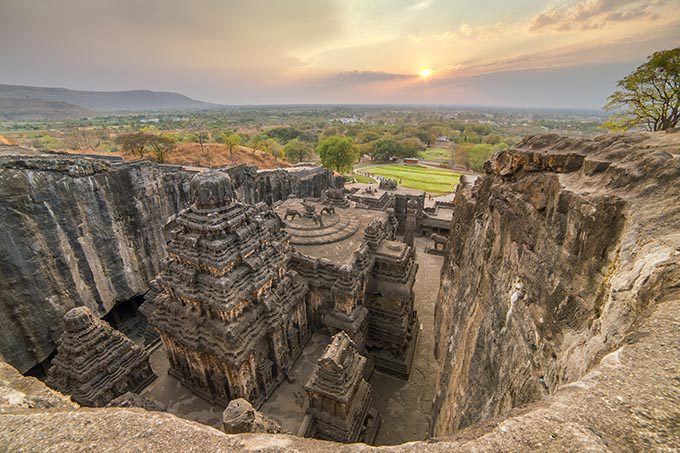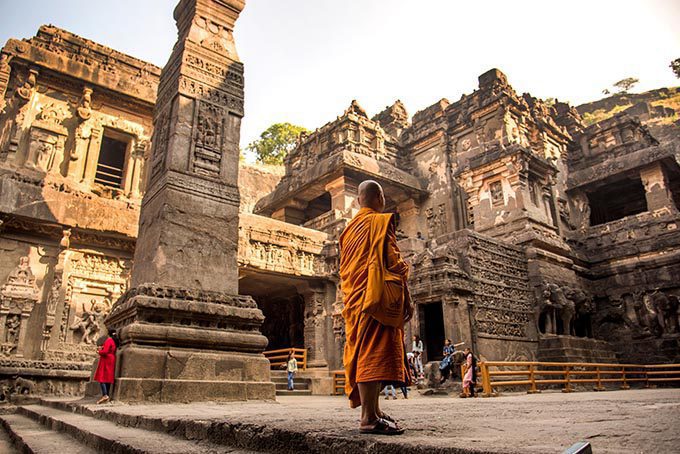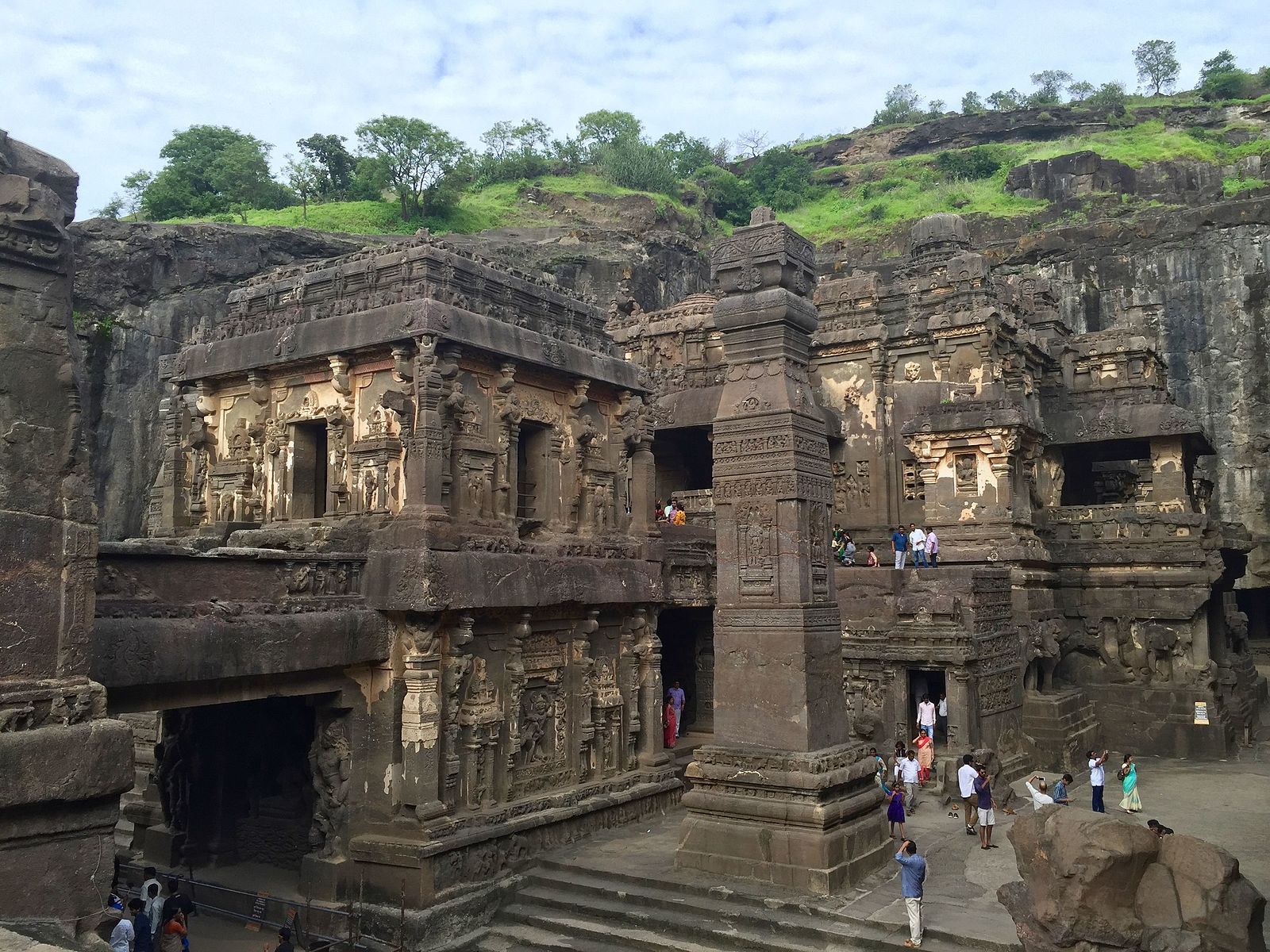Sculpting anything is pretty impressive, whether it be a Boy Scout wood carving or Michelangelo’s David. But all pales in comparison to the Kailasa Temple, a Hindu temple carved entirely out of a singular rock formation.
History of the Kailasa Temple
Also known as the Kailasha or Kailashanatha Temple, the Kailasa Temple was constructed over 1,200 years ago in India’s Sahyadri Hills. Laborers and craftspeople used nothing more than hammers and chisels to slowly gnaw through 200,000 tons of solid volcanic rock over the course of twenty years. Building began from above and methodically worked its way down roughly three stories. This practice is in stark contrast to how most structures are built, and the reason may lie in a Rashtrakuta legend dating back to the 8th century.
According to the legend of Katha-Kalpataru, a queen prayed to the Hindu god Shiva to cure her husband’s illness, and she promised to build a spectacular temple in return, abstaining from eating until she could see the top of the temple. Her prayer was granted, but it was soon realized that it would take months for construction to reach the top. One architect proposed that the temple be carved out of rock top-to-bottom, thereby allowing the queen to eat within a few days.
Read more: Antilia: The Biggest House in the World
Through main construction was completed under the rule of Krishna I, it is thought that unique improvements were added for hundreds of years under a multitude of different rulers. It is also possible that Krisha I’s uncle, Dantidurga, began building the temple when he still ruled. This is due to the similarities of the Kailasa Temple with Cave No 15, which also contains an inscription by Dantidurga.

Religious and cultural influences
The rulers who oversaw the construction of the Kailasa Temple were members of the Rashtrakuta dynasty of southern India. The Kailasa Temple was probably modeled after two other Hindu temples, the Virupaksha Temple at Pattadakal and the Kailasanathar Temple in Kanchipuram, but there are some deviations in style. The Kailasa Temple borrows heavily from that of Dravidian peoples who live in South India. Specifically, Chalukya and Pallava artisans were employed heavily throughout the temple’s construction and design, lending itself to a fusion of styles. However, the native Deccan culture was largely omitted.
The incredible design of the temple is breathtaking, construction notwithstanding. Almost every surface of the Kailasa Temple is covered in a detailed carving, many depicting Hindu figures and symbols. It is estimated that there are over 30 million Sanskrit carvings yet to be translated. While the main temple takes center stage, there are many different ancillary structures that are just as magnificent, such as the tower over the sanctum (shikhara), as well as countless independent pillars, soaring statues, and smaller shrines.
The entrance to the U-shaped courtyard is marked with religious ornaments. Shaivaite deities comprise the left side of the entrance, while Vaishnavaites mark the right. A two-storey gateway yields to the open courtyard, with a shrine to Shiva at its center and Nandi sitting on a porch, as is tradition. Though the temple itself is dedicated to Lord Shiva, there are five shines disconnected from it throughout the complex, each dedicated to an important Hindu deity. The base of the temple contains a plethora of carved elephants, which appear to bear the weight of the massive complex. By square feet, the Kailasa Temple is larger than even the Parthenon in Greece.
Tales from Hindu myths are told throughout the temple through detailed sculptures and carvings. The interior reminds one of a much older Sistine Chapel, with brilliant paintings decorating the ceiling. Sadly, much has faded over the centuries.

Legacy of the Kailasa Temple
There are 33 caves in the surrounding area that contain carved structures, but none compare to the size and detail of the Kasilasa Temple. Known as the Ellora Caves, the caves are designated a UNESCO World Heritage Site for the great cultural value they provide to humanity.
Not all have been so enchanted by the temple’s beauty. In 1682, a Mughal ruler by the name of King Aurangzeb attempted to have the Kailasa Temple destroyed and wiped from history. The Mughals were Muslim and wanted to limit the religious freedom of the Hindus in India. Over three years, more than 1,000 men were employed to destroy the temple, but the black rock proved too resilient, and the temple endured.
The Kailasa Temple serves as a testament to Indian ingenuity and art. Its fantastic architecture and carvings are a cultural treasure-trove as well as an aesthetic wonder. The fact that the entire temple was hand-carved only lends more credence to its beauty, and it is clear the Kailasa Temple will stand the test of time.


